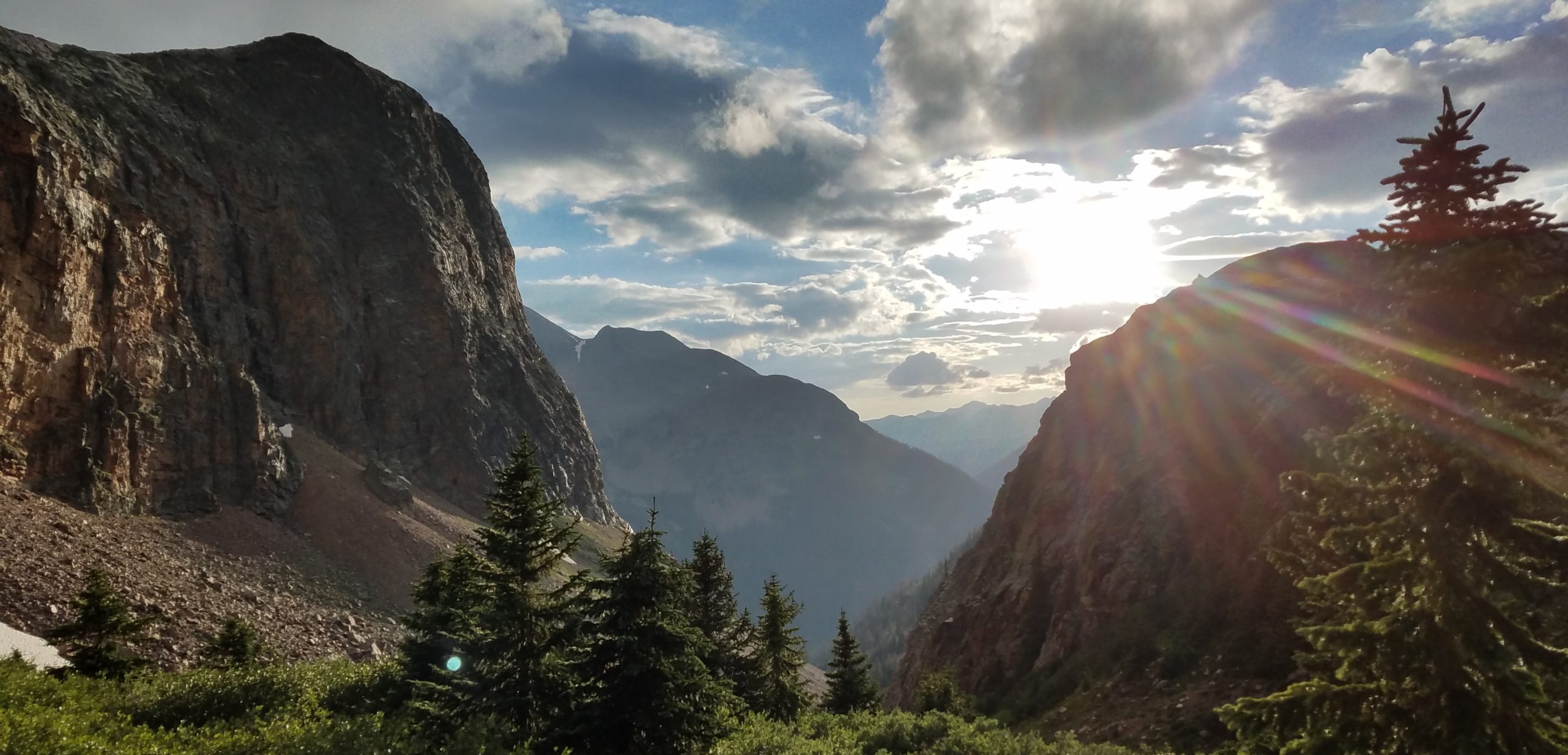June 21st- 30th, 2022
This is a long-winded explanation about why and how I changed my plans to start the PNT at the mid-way point near Oroville WA. It explains some of the in’s and out’s of flip-flopping.
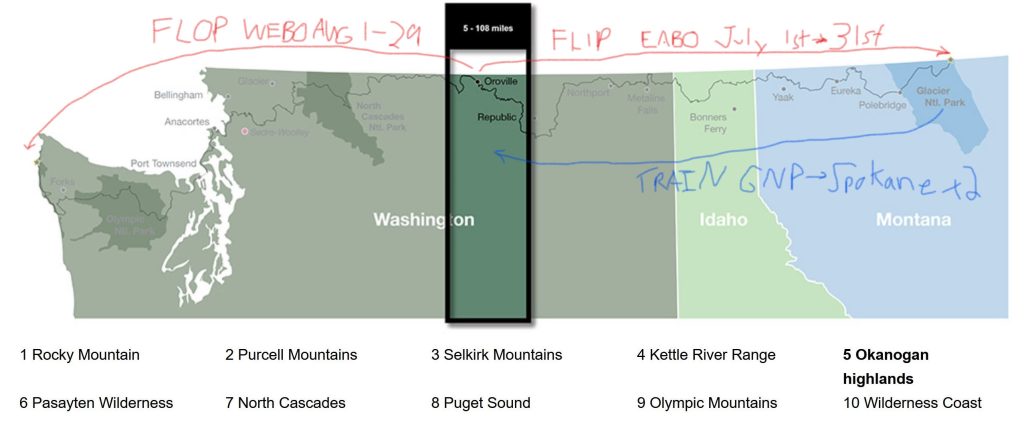
I’ve never had a hike begin with so much uncertainty and last minute decisions! Previous experiences prepared me well for being flexible and resilient, but this adventure really put this to the test. It didn’t help that I set myself up with some pretty complicated logistics beforehand, beginning with a flight segment to Denver almost 2 weeks before I was set to start the hike. Buying 2 separate one-way tickets (Miami – Denver & Denver – Kalispell) turned out to be a lot cheaper and allowed for some time in-between to visit family. But doing multiple stops while traveling with only my thru-hiking gear requires some early planning and consideration. It also makes last minute changes more stressful. I was up all night before my first flight fretting about gear choices, namely my clothing. Early reports from other hikers and the record-high SNOTEL (snow meter) readings drove home the message that I needed to be better prepared for hiking through a lot of lingering snow and also fighting off swarms of mosquitoes.
I considered delaying my travel plans but with two different flight segments on the line, it was too complicated and costly. At the last minute, (literally 3 am before my 6 am flight), I found myself digging through my stores to find my trekking tights and a long sleeve bug \ sun shirt. I ditched some other things from my pack but was still adding weight. My base weight had already gone up significantly in the past week, after adding my microspikes and an ice axe. I was not happy about all this and also stressing about my lack of experience with snow travel. By going southbound on the CDT and PCT, I’d been able to time the start of my hikes after the majority of snow had melted. Thus I hadn’t really spent days on end postholing, glissading or self-arresting unexpected slides.
Probably my most difficult day of snow travel yet had been postholing and climbing over thousands of blowdowns on the ridge of the Mogollon mountains in New Mexico, while thru-hiking the Grand Enchantment Trail. But that was only 1 day with no steep exposed slopes, ice bridges, or raging snow-melt streams to cross. My best taste for what was in store had come in the first two weeks on the PCT, namely in the Glacier Peak Wilderness. There I’d done a few spicy traverses, crossed some snow bridges on the verge of collapse, and walked over quite a bit of snow, only postholing a few times. All the stream crossing were far easier than anything I’d done in New Zealand, so I’d had it good!
Right before I left Miami, I shipped a bunch of stuff direct to East Glacier, including my trekking poles, tent stakes, ice axe, microspikes and umbrella. The rest I brought in my skeleton pack with me for 5 days in Denver, where I continued to stress about snow and flooded streams. Again I considered delaying my arrival to Glacier, with the option of remaining in Denver longer. As luck would have it, my aunt mentioned that one of her best friends lives in Whitefish and that I could possibly stay with her for a few days to a week. I figured that I’d at least try to get through the first segment of the trail in Glacier National Park. The stretch from Chief Mountain and Polebridge is only 50 miles and involves 2 passes, only one of which was described to be sketchy in snow. It was the second segment through the Whitefish mountains to Eureka that I was fearing the most.
When I bought my plane tickets in mid May, the SNOTEL on Stahl peak (which the PNT goes past in the Whitefish) was reading around 170% above normal snowpack. It was definitely an above average snow year but, I figured, still manageable for an end-of-June start. By the time I flew to Denver, that same meter was reading 500%. Days before my flight to Kalispell, it read 700% and the day of it was over 1000%!!! It’s not that the snow was increasing all that time, it just wasn’t melting. It was also at it’s highest level in 30 years! I thought the meters must be broken but pictures from the first PNT hiker to set off June 15th, confirmed ginormous piles of snow in the range. The PNT travels along the ridgeline for close to 40 miles in that section. It had taken him 13 hours to go 13 miles one day and he was a very fit and tall hiker. He reported postholing up to his waist and very sketchy traverses and glissades. He bailed on an alternate trail near the end, eliminating the last 22 miles of the section to Eureka. I seriously doubted I could even make it half as far.
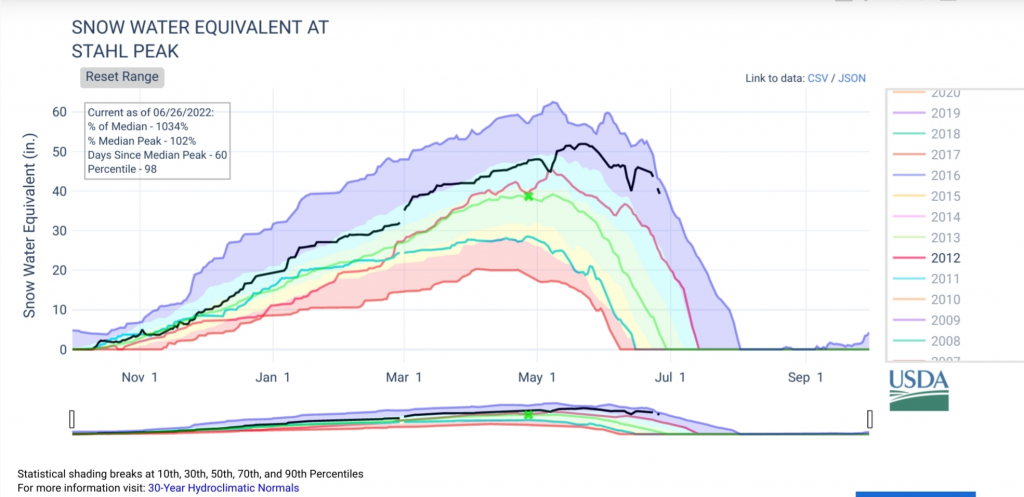
One day before my flight to Kalispell, I was unable to sleep for all my fretting over the snow. I woke early and started messaging Buck30, a very experienced hiker I’d been following since before my first thru-hike. I’d recently friended him on FB and he’d told me of his and Steady’s plans to hike the PNT this summer (he’d also hiked it in 2012 during a high snow year and had to bail to a lower route through the Whitefish). Originally they planned to start about a week and a half behind me. I asked again what they were going to do and he set in motion my new plan to flip-flop, as that’s what they were now hoping to do as well.
Observant readers may recall that my CDT hike was a sort of a flip-flop, in that I got off trail in Grants NM for a family emergency and then flipped up to Glacier to hike the CDT south about a month and half later. I had originally planned to flip at the CO \ NM border anyway, so this was always an intentional strategy of mine. Many thru-hikers abide by the purist mantra of hiking straight from one end to another. Even more are stuck in their ways of always going northbound. Because I’ve been a master of going against the flow (sobo) and also because I’m just happy to walk and could care less about direction, a flip flop on the PNT immediately appealed to me. I don’t know why I hadn’t thought of it before, but when Buck30 laid out the easy logistics, I jumped on the bandwagon.
From Whitefish, I could simply take the Amtrak train to Spokane ($50 one-way ticket), then a bus to Kettle Falls and a hitch across to Republic WA, which sits just 100 miles shy of the halfway point of the PNT (mm530 at the western access point). Since I knew it would take me 3-4 weeks to hike the distance back towards Glacier, this seemed like the perfect timeline to allow most of the snow to melt in Montana. When I finished going EABO at the eastern terminus, I would repeat my travel plans to pick up the trail and finish WEBO.
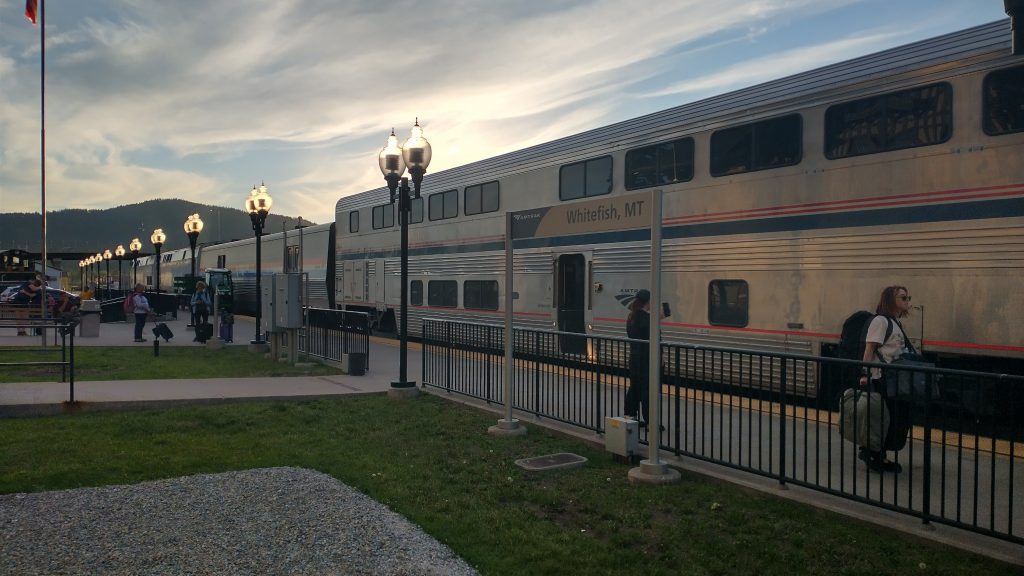
The main problem with my new plan was not so much the travel logistics and extra expenses, but rather my resupply boxes. I’d shipped several packages to East Glacier, which I now wasn’t going to visit for the start of my hike. These had crucial items like my trekking poles and tent stakes. I also needed some supplies out of the box I’d shipped to Polebridge. In this, my newfound connection with my Aunt’s friends in Whitefish really saved the day! Judy and Stewart graciously picked me up from the airport, provided a refuge to stay while I got my things together, and even had a friend in Polebridge bring my box down when she came to town on an errand. As for the EG packages, Luna of the Looking Glass base camp and hostel (where I had them shipped) had to make an unexpected trip to Kalispell, which just so happened to coincide with one of our trips into town. I was able to meet up and collect them from her, easy as that (I also gave her some money for all the extra effort she went through to bring my boxes!). I really got lucky in the re-working of all my logistics, which was a sure sign I was on the right path, finally.
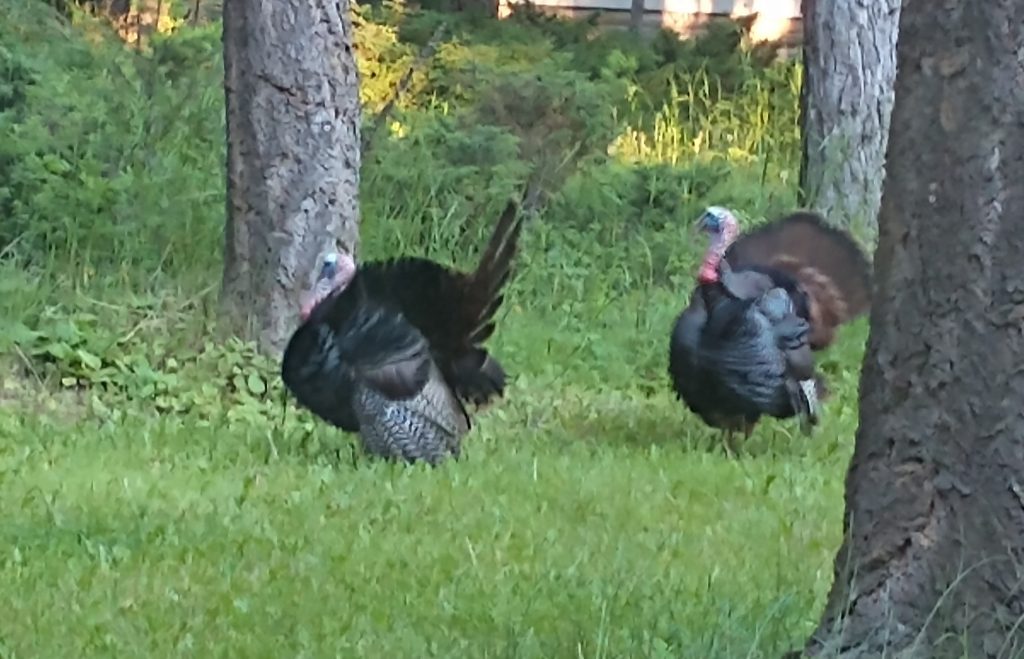
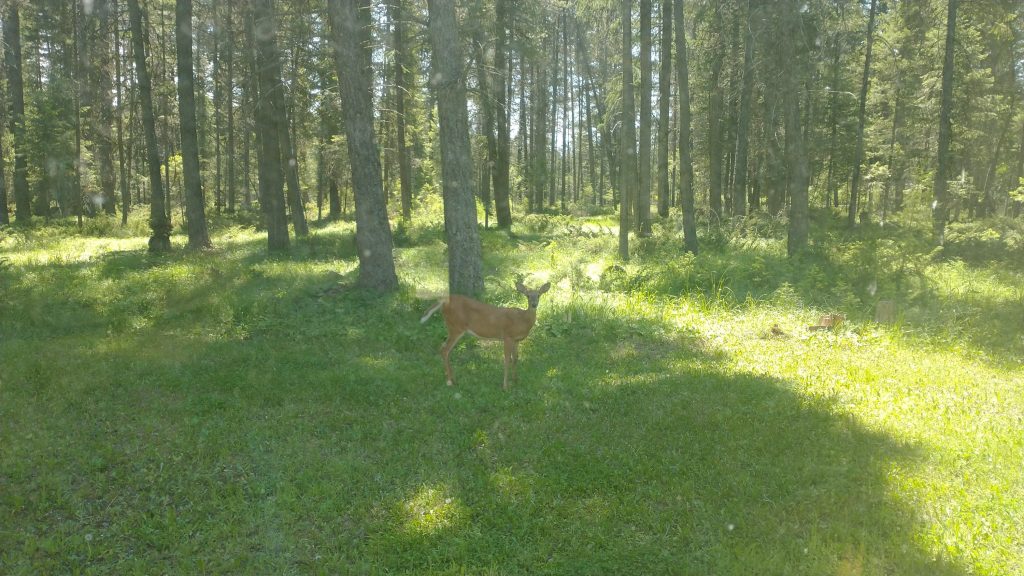
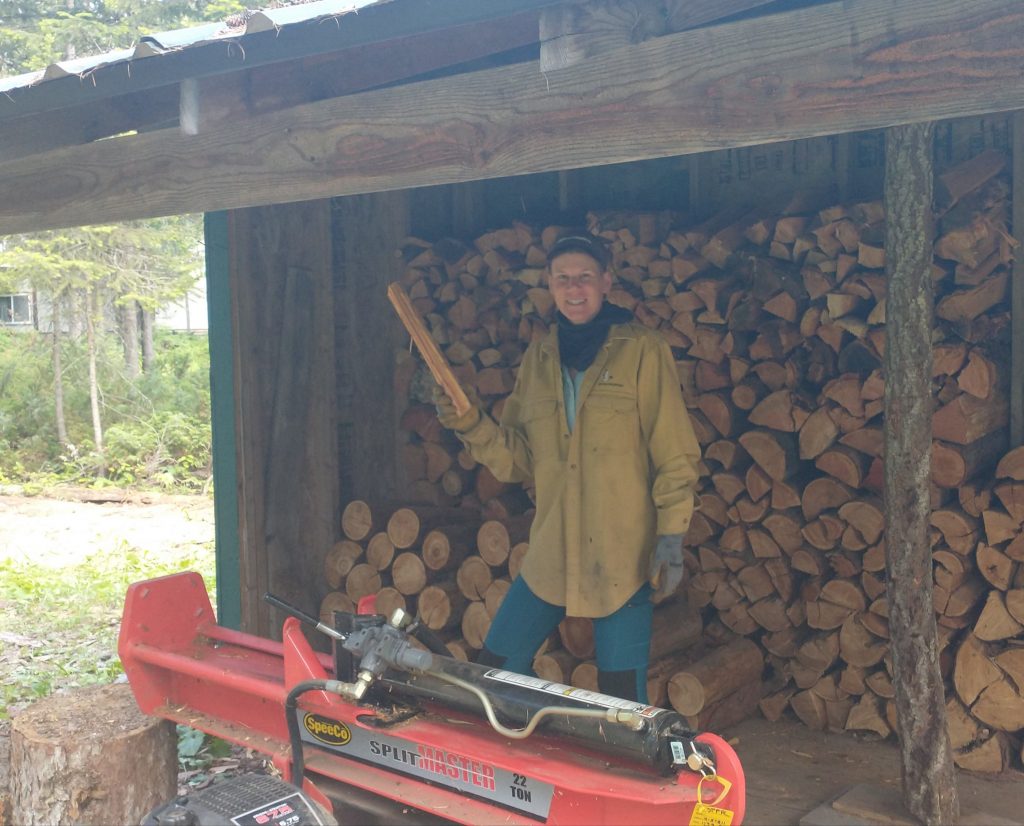
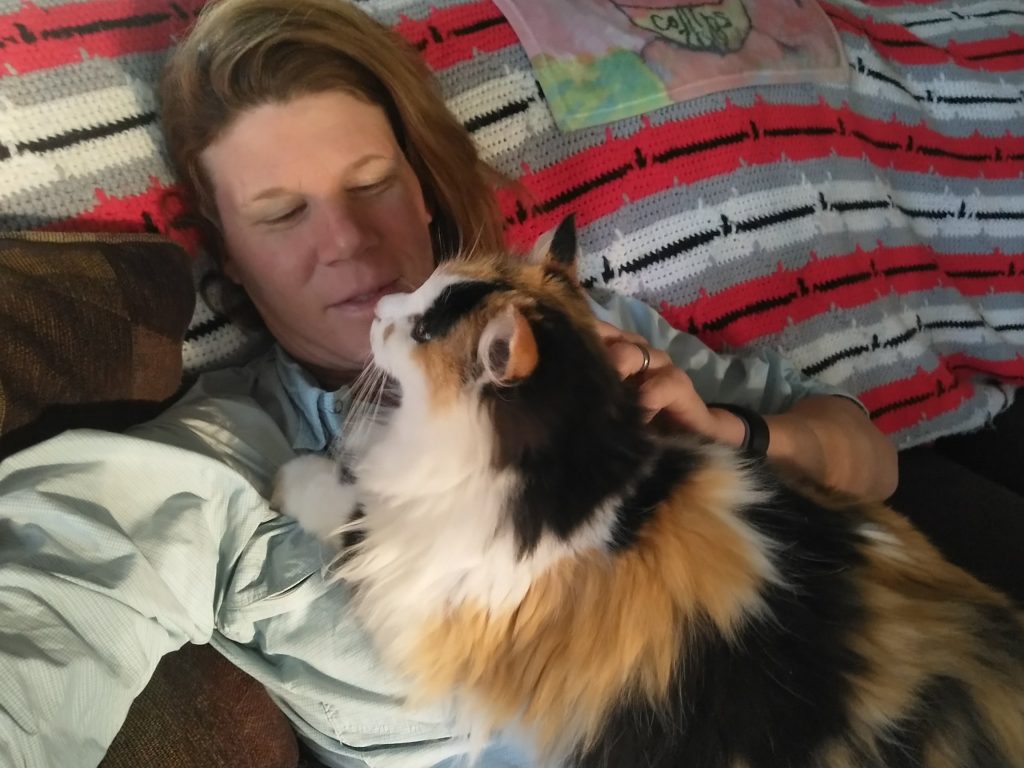
I stayed for 4 full days outside of Whitefish at Judy’s Terrapin Organic farm. This was an amazing experience, as it was in a beautiful setting in the woods, full of life, and brimming with restorative energy. I volunteered my time for my keep, helping to harvest 50 lbs of rhubarb and 5 lbs of asparagus, splitting wood, and weeding a 50 ft bed of spinach. I also helped bag and weigh the rhubarb and later cut up all the leftovers to make a delicious compote…I’m a big fan of this weird stalk vegetable now! And I have SO much respect for all the hard work real farmers like Judy do to bring fresh and healthy food to people. This was an incredible insight into such an important but under-appreciated business. Thank you to Judy and Stewart for hosting me, driving me around, and feeding me delicious fresh food from the farm. It was truly a pleasure getting to know this hearty Montana couple. And thanks to my lovely Aunt Peggy for linking us together!
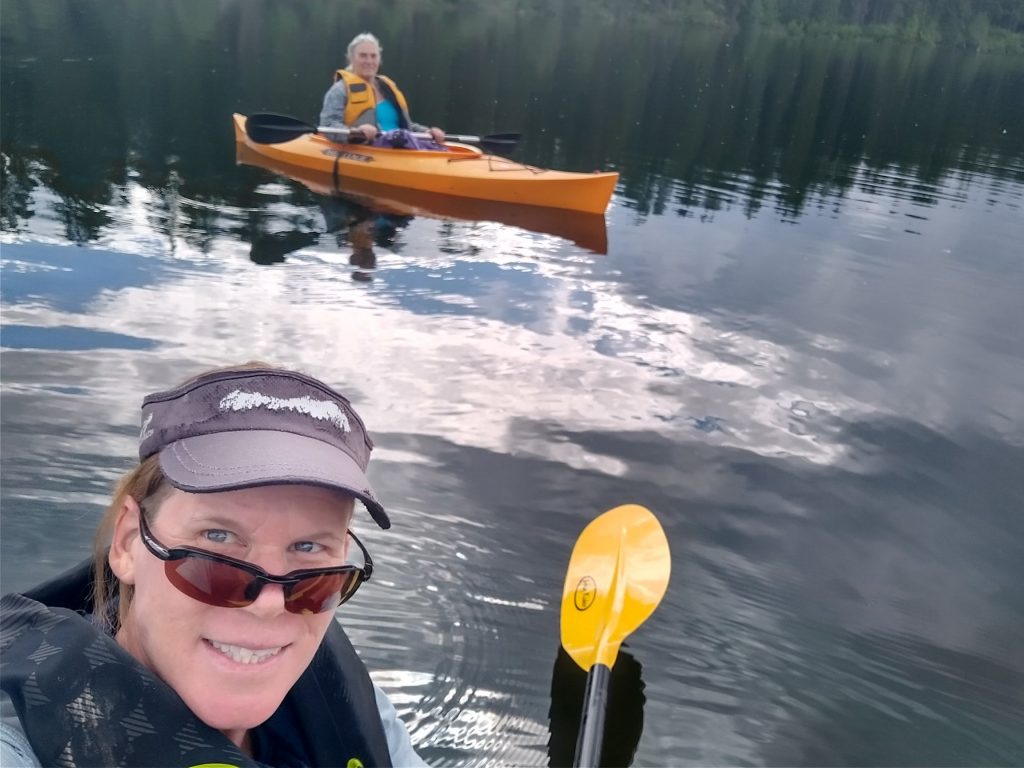
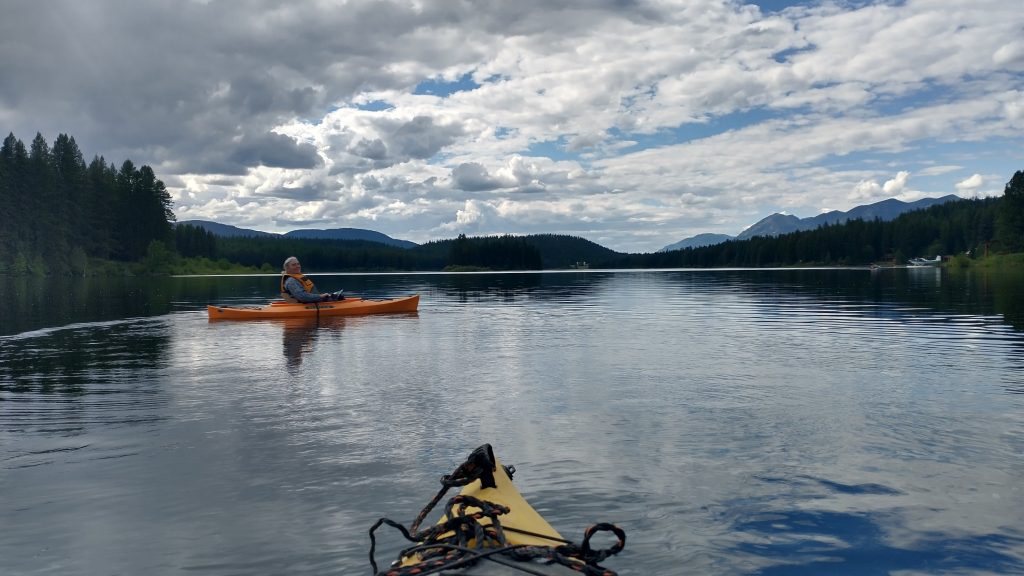
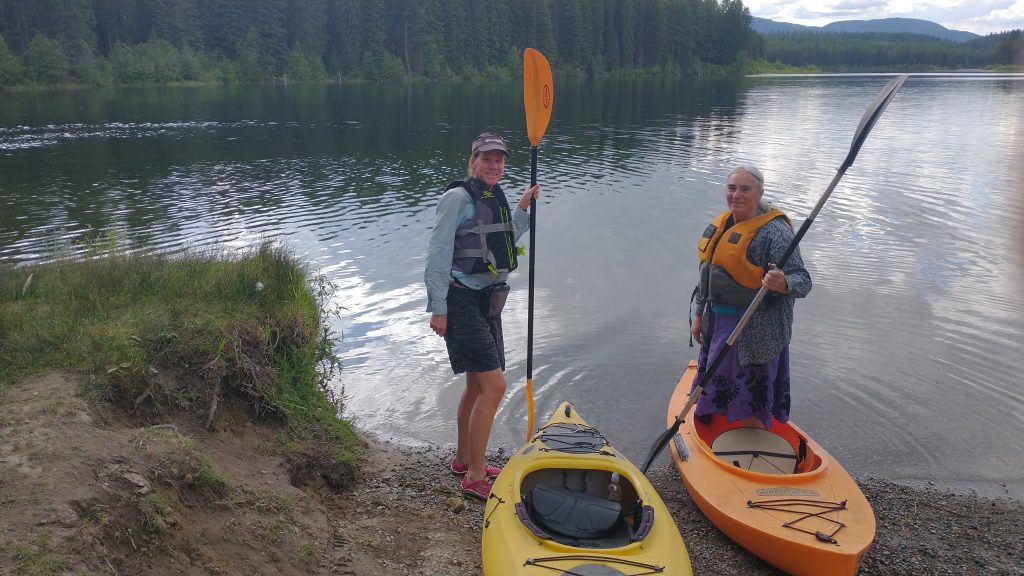
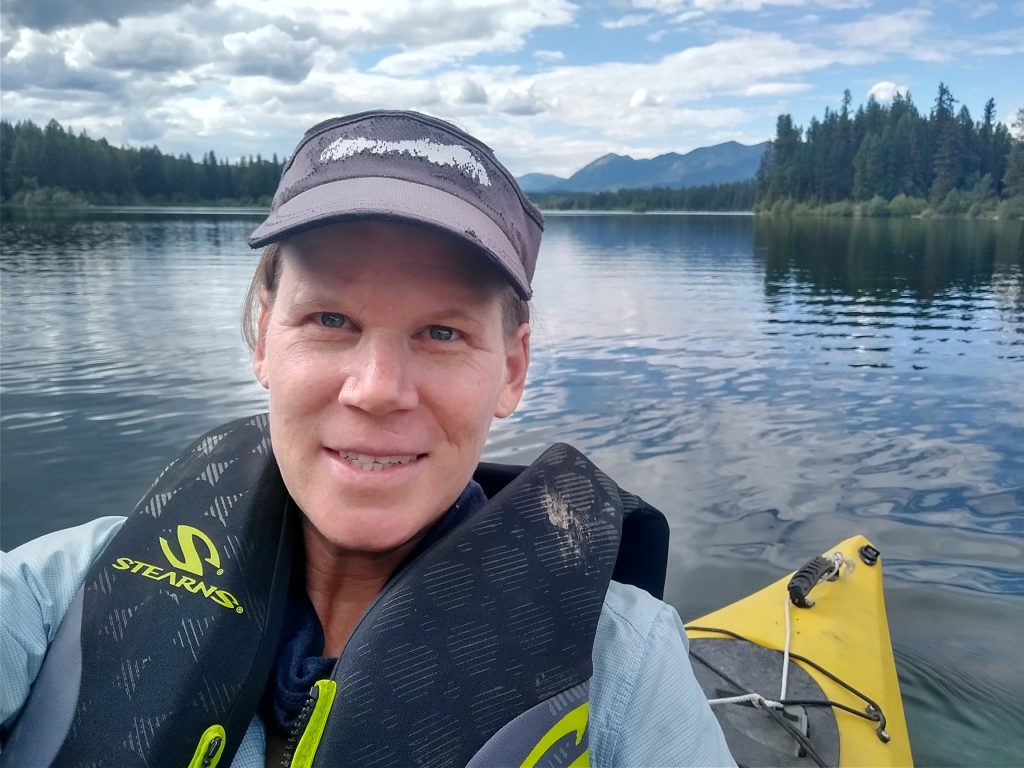
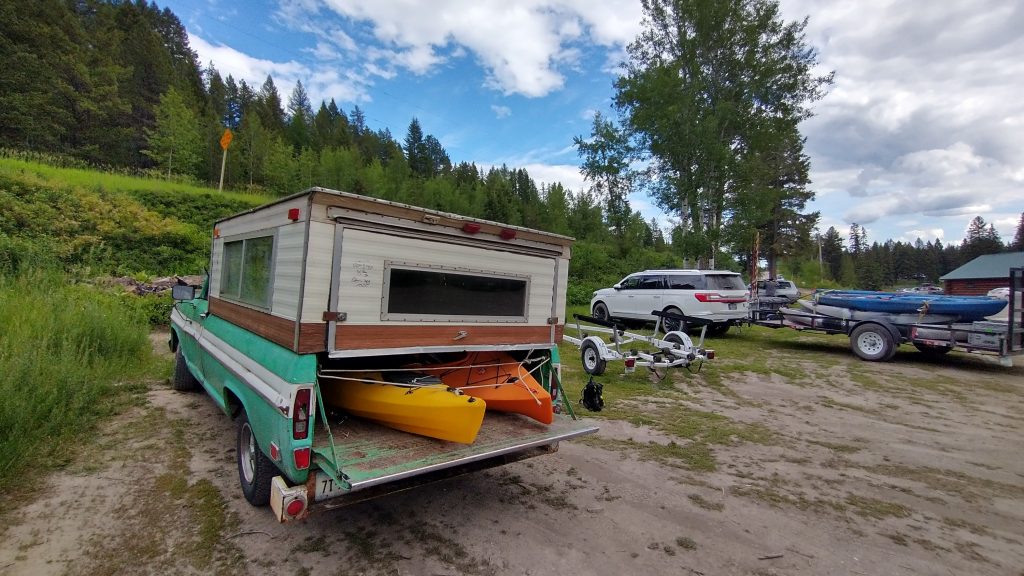
As a special treat for my last day, Judy and I went kayaking on lower Stillwater lake just hours before my train ride. It was the perfect ending to my Montana Mountain reset. Now finally onto WA and the trail!
